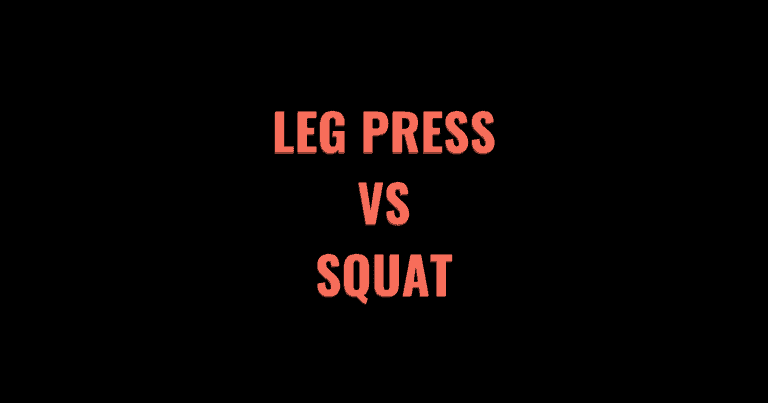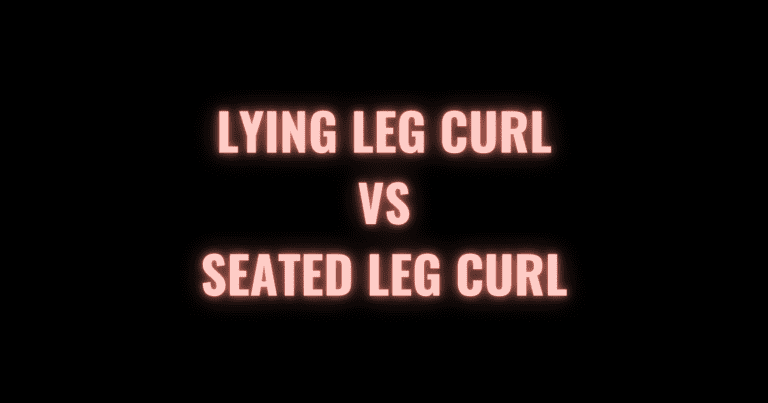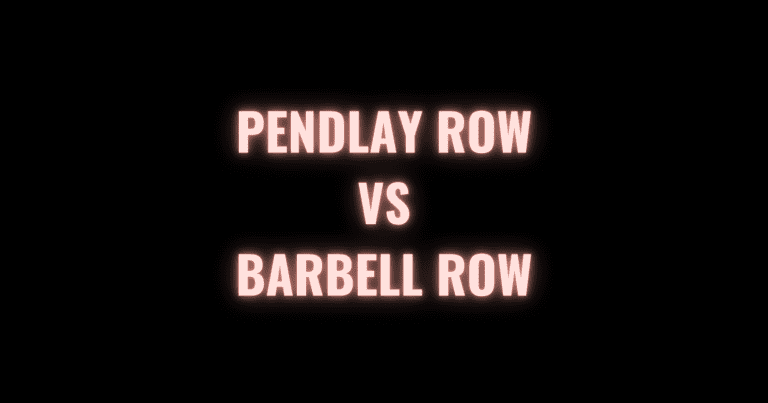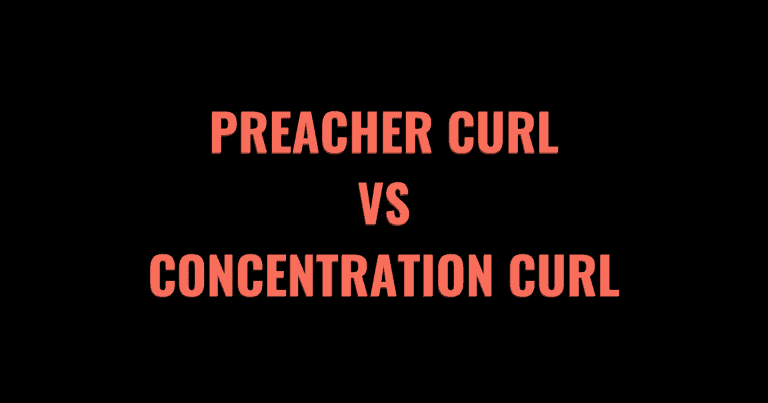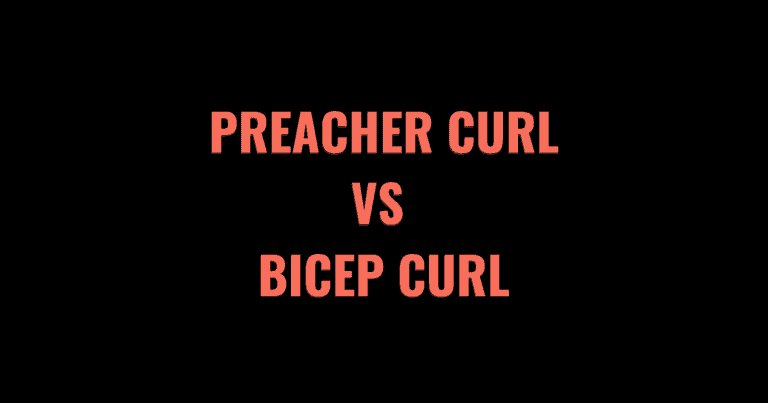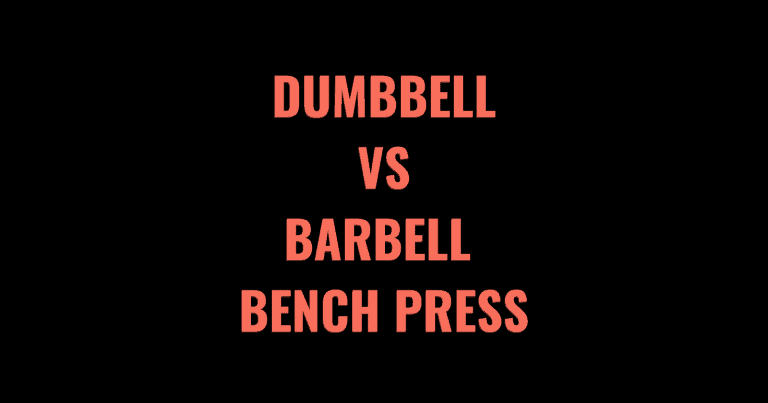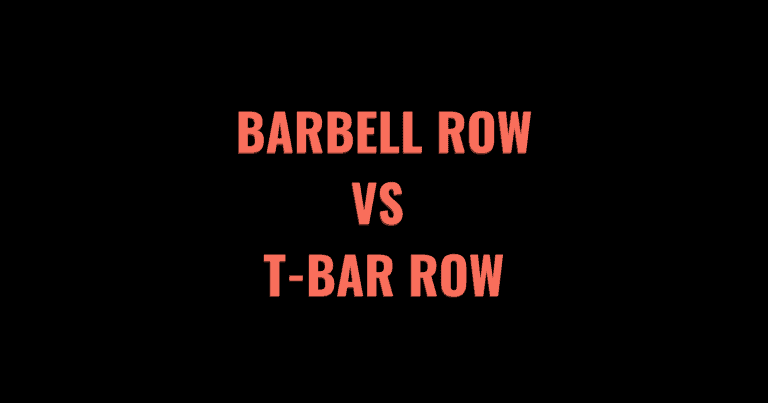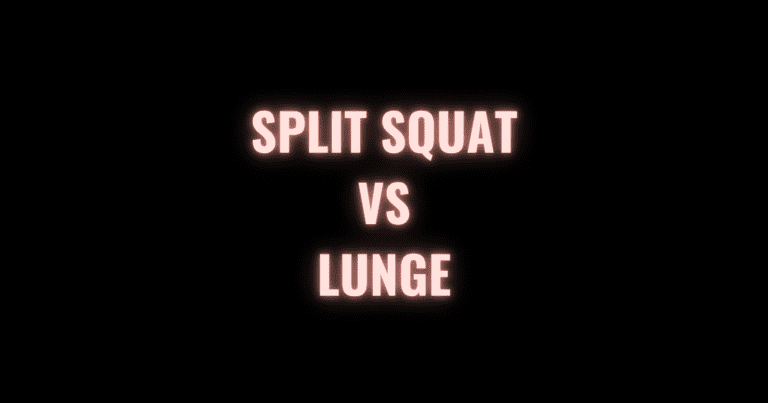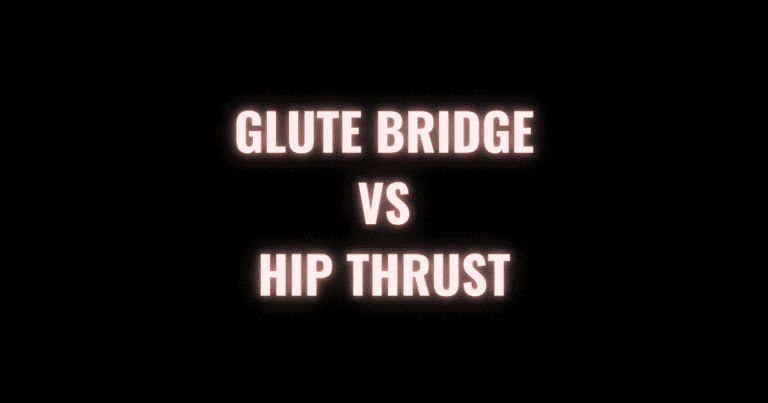Do you want to maximize your bicep growth and strength but aren’t sure which exercises to choose?
Have you been training your upper body for years without seeing the bicep growth and definition you would like?
Are you wondering whether bicep curls using a barbell or dumbbell will be most effective at helping you reach your muscle-building and strength goals?
We’ll compare these two bicep curling exercises, go over the key differences and help you decide which to include in your upper body session to get you maximum results.
Table of Contents
- 1 What is the main difference between a barbell curl and a dumbbell curl?
- 2 Barbell Curl vs. Dumbbell Curl: Pros and Cons
- 3 Barbell Curl vs. Dumbbell Curl – When to do an exercise
- 4 Barbell Curl vs. Dumbbell Curl – Muscles Used
- 5 Form Differences
- 6 Helpful Form Cues
- 7 Common Form Mistakes
- 8 Frequently Asked Questions about Bicep Curls
- 9 Other Exercise Comparison Posts
- 9.1 Tricep Extension vs Skull Crusher: Pros and Cons
- 9.2 Leg Press vs. Squat: Differences, Pros, and Cons
- 9.3 Lying Leg Curl vs Seated Leg Curl: Pros & Cons
- 9.4 Pendlay Row vs Barbell Row: Differences and Benefits
- 9.5 EZ Curl vs Straight Bar Curls: Differences, Pros, and Cons
- 9.6 Preacher Curl vs Concentration Curl: Which is Better?
- 9.7 Romanian Deadlift vs Deadlift: Which is Better?
- 9.8 Preacher Curl vs Bicep Curl: Differences, Pros, and Cons
- 9.9 Dumbbell vs Barbell Bench Press: Differences and Pros & Cons
- 9.10 Barbell Row vs T-Bar Row: Differences, Pros, and Cons
- 9.11 Split Squat vs Lunge: Differences & Benefits
- 9.12 Glute Bridge vs Hip Thrust: Differences & Benefits
What is the main difference between a barbell curl and a dumbbell curl?
The main difference between a barbell curl and a dumbbell curl is that the barbell curl typically allows the lifter to curl more weight, making it a better choice for maximizing hypertrophy. The dumbbell curl is great at addressing muscular imbalances and engaging the stabilizing muscles of the upper body.
The best exercise for you will depend on your goals, access to equipment and comfort, and experience level.
Barbell Curl vs. Dumbbell Curl: Pros and Cons
Other critical differences between the barbell curl and the dumbbell curl include the equipment used and the position of your wrists.
Barbell curls are a bilateral (both-sided) bicep exercise, whilst dumbbell curls work each arm in isolation. One type of bicep curl isn’t definitively ‘better’ than the other, though one might be better suited to your individual needs and goals.
Both exercises can form part of a great upper body workout, with a 2018 study finding no major difference between the two for engaging the biceps when using a supinated grip.
Barbell Curl Benefits
Here are some of the advantages of barbell curls.
- You can (probably) lift more weight. Most lifters will find they can lift more weight in a bilateral barbell curl compared to a dumbbell curl. This will allow you to set new PRs and potentially increase the potential for maximal hypertrophy.
- Easier to progressively overload. The barbell curl allows incremental increases in weight by adding small 2.5lb plates. This makes it simpler and possibly safer to keep pushing yourself to get stronger and build bigger biceps.
- Encourages strict form. Once you have gripped the barbell in your set-up for the curl, your hands don’t move throughout the set. This eliminates any variance in your grip and ensures a consistent bar path for each repetition. The barbell curl also removes the possibility to generate momentum through the legs, as the bar will be forced to come to a dead stop when it hits your thighs.
- Might be safer. The barbell curl locks your arms into place whilst you perform the exercise. It is also a bilateral movement, so the weight is distributed across both your arms. This requires less stabilization and balance, allowing you to safely lift more weight.
Barbell Curl Drawbacks
Here are some of the drawbacks of barbell curls.
- Less range of motion. Compared to a dumbbell curl, a barbell bicep curl requires less range of motion, limiting the amount of elbow flexion and potentially limiting muscle activation and hypertrophy.
- Less natural wrist and elbow position. Barbell bicep curls can lock the elbows and wrists in a less natural position than a dumbbell curl. When you start to add more weight to the bar, this can put a serious strain on these two joints.
- Less effective at addressing muscular imbalances. Barbell bicep curls are bilateral movements, meaning both arms work together to lift the weight. If one arm is stronger than the other, it may start to do the majority of the work. This can worsen muscle imbalances and limit your ability to progressively overload.
Some of these barbell curl drawbacks are highlighted in this video from RedCon1’s head trainer Joe Bennett.
In the video he lays out two criteria that should be met before someone does barbell curls:
- You should be able to supinate your wrists 180 degrees (completely flat, facing upward).
- Your hands must stay about the same distance apart when you perform your “natural” curling motion.
If you don’t meet these two criteria, you’re probably better off performing dumbbell curls.
Dumbbell Curl Benefits
Here are some of the advantages of dumbbell curls.
- Helps to rectify muscle imbalances. Most people naturally favour their left or right arm, both in the gym and in everyday activities. The dumbbell curl works the biceps unilaterally, helping to balance out the strength and size of each of your arms.
- Greater range of motion. Using free weights like dumbbells allows you to reach a full range of motion, lifting the dumbbell all the way into your body. More range of motion typically means more muscle engagement, making the dumbbell curl effective at stimulating muscle growth.
- More comfortable and beginner-friendly. Dumbbell curls allow you to rotate your wrists and alter your movement path to be comfortable for your body. They may also be a better choice for beginners to get used to the feel of a bicep curl before using a heavily loaded barbell.
- Improves overall stability and functionality. Holding one dumbbell per hand requires the stabilizing muscles in your arm to work harder. This can help you increase your balance and stability and may translate better to other functional movements.
Dumbbell Curl Drawbacks:
Here are some of the drawbacks of dumbbell curls.
- Risk of overloading or injuring stabilizing muscles. Dumbbell curls require more stabilization and balance to keep the dumbbells in the correct position. This can have benefits, but also risks. As you start to lift heavier dumbbells, some lifters may experience excessive fatigue or even pain in the wrists, forearms and postural muscles.
- More difficult to overload. Unless you have access to an unlimited amount of increasingly heavy dumbbells, you may eventually hit a plateau for progressing the dumbbell curl. Dumbbells also often go up in 5lb increments, so you may find yourself struggling to select the appropriate weight as you progress.
- Easier to ‘cheat’. Without a barbell locking you in place, it is easy to let your form start to slip, especially if you are a beginner or when you are fatigued. Lifters may inadvertently start recruiting their legs and ‘swinging’ the back to generate momentum and lift the dumbbells.
Barbell Curl vs. Dumbbell Curl – When to do an exercise
When to do a barbell curl
If you want to lift as much weight as possible to target your biceps, the barbell curl may be the best choice for you. The barbell curl is also a great choice for people who have limited access to equipment, as you can progress without needing a huge selection of dumbbells.
The barbell curl can be a motivating lift to track, as you will likely be able to hit new PRs quite regularly. They are also great at isolating the biceps, as it locks you in position, making it difficult to recruit the legs to help you complete the lift.
Again, be sure to take note of any discomfort in the wrists or elbows that may arise from performing the barbell curl. If this happens, consider switching to using an EZ curl bar or dumbbells to perform your curls.
When to do a dumbbell curl
If you want to recruit as many muscle fibers as possible by moving through a maximal range of motion, dumbbell curls might be a better choice. Dumbbell curls are also a great exercise for people wanting to address muscle imbalances and improve overall balance and coordination.
If you are a beginner or feel more comfortable using free weights which allow a more natural movement pattern, dumbbells are a better choice for you. Dumbbell curls will likely be more comfortable if you have any wrist or elbow issues.
Barbell Curl vs. Dumbbell Curl – Muscles Used
The barbell curl and the dumbbell curl are both pulling movements that primarily target the biceps brachii. The biceps brachii make up about one-third of your upper arm and is comprised of two heads – the long head (located on the outer side of your upper arm) and the short head (located on the inner side of your arm, closer to your torso).
Both types of bicep curl also engage secondary muscles to assist and stabilize the exercise.
Barbell Curl Muscles Used
Barbell curls primarily target the biceps brachii. The biceps brachii contract to initiate the movement, creating elbow flexion and bringing the forearms closer to the body. Barbell curls also engage secondary muscles in the lower and upper arms.
- Primary: Short head of the Biceps Brachii
- Secondary: Long Head of the Biceps Brachii, Brachioradialis, Brachialis, Deltoid, Wrist Extensor Muscles and Wrist Flexion Muscles
Dumbbell Curl Muscles Used
Dumbbell curls are primarily initiated by contracting the short head of the biceps brachii. The brachioradialis, brachialis, deltoids and wrists also stabilize and support the movement. Dumbbell curls also require some engagement from the core and postural muscles.
- Primary: Short head of the Biceps Brachii
- Secondary: Long head of the biceps brachii, Brachioradialis, Brachialis, Deltoid, Wrist Extensor Muscles, Wrist Flexion Muscles, Abdominals
Form Differences
The primary difference between a barbell curl and a dumbbell curl is whether you are working both biceps in unison, or working one arm at a time. There are also slight variations in how you position your wrists and elbows. In a barbell curl set-up, your elbows are tucked into the body with your wrists in a supinated position just in front of your quadriceps. In a dumbbell curl set-up, your elbows are close to the body but your wrists can be either at your sides or in front of you.
How to do a barbell curl with proper form
- Stand up tall with your feet about shoulder-width apart.
- Grab your loaded barbell with your palms facing outward (supinated grip) and your hands roughly in line with your feet.
- Tuck your elbows in close to your torso and brace your core.
- Lift the barbell towards your chest by squeezing and contracting your biceps.
- Pause for a second at the top of the lift.
- With control, release the barbell back to its starting position.
- Repeat for the desired number of repetitions before resetting at the end of your set.
For a visual aid, check out this video from Scott Herman demonstrating the correct form for a standard straight barbell curl.
How to do a dumbbell curl with proper form
You have a few options for how to structure your sets for dumbbell curls. You can work one arm at a time, either by completing a full set one on arm then swapping, or by alternating arms for each rep. You can also lift both dumbbells at the same time for more efficiency.
- Stand tall with your chest lifted and your feet shoulder-width apart from each other.
- Hold the dumbbells at your sides with your arms extended. Tuck your elbows into your torso and brace the core to avoid generating momentum.
- If training one arm at a time, start with your weaker or less dominant arm. Squeeze your bicep to bend at the elbow and bring the dumbbell all the way to your chest.
- Pause for a moment before slowly lowering the dumbbell/s back to its starting position.
- Repeat for the number of desired reps, either performing a full set on each arm or alternating for each repetition.
This video from Scott Herman provides a useful visual guide on how to do the alternating dumbbell press, however, the form cues and principles still apply if you lift both dumbbells simultaneously.
Helpful Form Cues
Barbell curl form cues
- Lock in your shoulders. To fully engage the biceps, your shoulders should not move during your set. Pull them back and down away from your ears. Allowing them to travel up can place strain on your upper traps and cause dysfunctional movement patterns and discomfort.
- Keep your elbows tucked and pointing at the ground. Your elbows should be pinned tightly to your torso, slightly in front of you. This is to help isolate the biceps and prevent the elbows from moving around during the set. Think about keeping your elbows pointing down throughout the exercise to keep them from falling outwards.
- Squeeze the bar with your hands. Gripping the barbell tightly with your hands and fingers will lock the bar in place and activate the forearm and bicep muscles. Gripping the bar tightly can also help prevent the elbows from flaring out.
- Hold at the point of maximum contraction. It is easy to start rushing when you get tired, especially during the eccentric (lowering) phase of the movement. Pause for a second or two at the top of the exercise and focus on lowering it slowly and with control.
Dumbbell curl form cues
- Keep the hands and wrists active. Be careful to keep some tension in the wrists and hands, especially at the top of the exercise and in the lowering (eccentric) phase of the lift. Relaxing your hands too much reduces the mechanical tension on the bicep and may cause pain or injury in the wrist.
- Start with your weaker or less dominant arm. Unilateral exercises are great for addressing muscle imbalances as long as the stimulus is evenly distributed. Start your set with your weaker arm and match the work with your stronger side to even out the strength and size of your left and right arm.
- Control the eccentric. Dumbbell curls are great for moving the weight through an extended range of motion. Get the most out of the exercise by slowing down the lowering phase of the lift to give the muscle fibers more time under tension.
- Brace the core. Dumbbell curls engage more stabilizing muscles in the torso to balance the weight. Avoid swinging or thrusting at the hips by bracing your abdominals throughout the lift.
Common Form Mistakes
Barbell curl form mistakes
- Not moving through a full range of motion. Many lifters accidentally start to perform partial reps in a barbell curl. Aim for maximum contraction at the top of the lift, and check your form by using a spotter or filming yourself to ensure proper technique.
- Swinging the elbows. Ensure you are isolating the biceps by being careful not to swing the elbows upward to initiate the lift. Lock your elbows in place to avoid generating momentum and keep the movement controlled.
- Overshooting your weight. The barbell curl is a great movement for lifting as much weight as possible. Unfortunately, this can lead many lifters to ‘ego lift’ or increase the weight beyond what they can lift with proper form. If your form starts to slip, reduce the weight.
Some additional form mistakes are covered in this video from Rennaisance Periodizaiton.
Dumbbell curl form mistakes
- Excessive rotation in the wrist. Some movement of the wrist is normal during a dumbbell curl. It should not become so exaggerated that you end up doing a sort of hybrid between a bicep curl and a hammer curl. Keeping your palms supinated throughout each rep will help isolate and target the biceps brachii more effectively.
- Not bracing the core. Rocking forward and back can generate momentum to assist you to lift the weight. This takes the strain off of the biceps and makes the exercise less effective for building strength and size.
- Not locking the elbows in place. Some lifters fail to keep their elbows tucked in close to the body in a dumbbell curl. The result is an entirely different movement pattern with almost no elbow flexion and suboptimal bicep engagement. If your bicep curls resemble more of an uppercut motion than a strict bicep curl, you need to adjust your form.
Jeremy Ethier has a great video that covers many common dumbbell curl form mistakes.
Frequently Asked Questions about Bicep Curls
Barbell curls and dumbbell curls both have their pros and cons for generating muscle hypertrophy. Barbell curls generally allow you to load the muscle with more weight, whilst dumbbell curls require a greater range of motion, activating more muscle fibers. The best curl variation for you will depend on your preferences, goals, abilities, and access to equipment.
To increase your range of motion, a curved or EZ bar may be a better choice. A curved barbell is designed to stop the barbell from getting in the way of fully flexing and extending at the elbow to recruit as many muscle fibers as possible.
There is no singular best type of bicep curl that will be optimal for all lifters.
Barbell and dumbbell curls both have pros and cons for building the strength and size of your biceps. Barbell curl variations include the EZ bar curl, which gives you some of the range of motion benefits of a dumbbell curl whilst allowing you to load a heavier weight.
Seated or preacher curls are a useful way to isolate the biceps in either a barbell or dumbbell curl, as they eliminate the legs from assisting the lift. In a 2014 study, dumbbell concentration curls, where the elbow of the working arm is propped against the inside of your knee, were found to be more effective at engaging the biceps than other variations.
Experiment with different variations to find what you get the best results from and which you enjoy the most. The most optimized workout program will do little for you if you dislike it so much that you aren’t consistent. Finding what works for you and being consistent with it is the best way to get the best results.
Other Exercise Comparison Posts
If you enjoyed this post, check out our comparisons of other popular exercises below.

